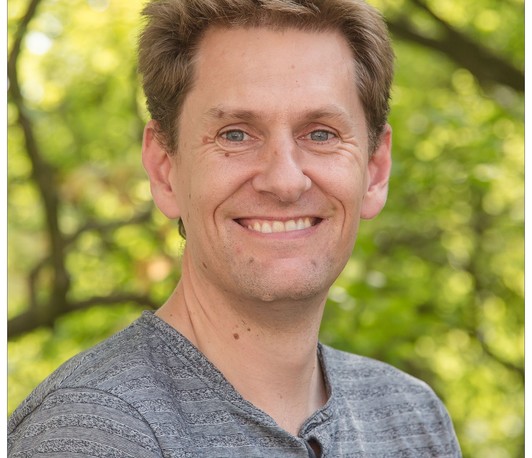"Strongly interacting photons based on two-level systems coupled to waveguides: one, two, many" (MCQST-Colloquium) (Prof. Anders Søndberg Sørensen)
- Datum: 06.02.2024
- Uhrzeit: 14:00
- Vortragende(r): Prof. Anders Søndberg Sørensen
- The Niels Bohr Institute, University of Copenhagen, Denmark
- Ort: Max Planck Institute of Quantum Optics
- Raum: Herbert Walther Lecture Hall

An interesting effect, which can be realised is two-photon bound states [1]. These are the quantum limit of optical solitons [2]. I will discuss the physics of these bound states and in particular how to observe unambiguous signatures of them. A particular illustrative example can be found for bound states in tunnel coupled waveguides. In this case unbound photons can freely jump between waveguides whereas photons in a bound state always jump simultaneously and at a much slower rate (see figure) [3].
For unbound photons the scattering dynamics exhibit a rich and complicated structure including inelastic scattering and scattering resonances. I will present a complete solution of the scattering dynamics [4]. This understanding of the scattering dynamics can be used as a starting point for an effective description of quantum many-body dynamics of multiple photons. As a particular example I will show that a photonic Tonks-Girardeau gas is a stable solution for a finite chain of weakly excited atoms in a waveguide.
[1] B. Bakkensen, Y.-X. Zhang, J. Bjerlin, Anders S. Sørensen, arXiv:2110.06093
[2] S. Mahmoodian, G. Calajó, D. E. Chang, K. Hammerer, and A. S. Sørensen, Phys. Rev. X 10, 031011 (2020).
[3] B. Schrinski, J. A. Brimer, and Anders S. Sørensen, arXiv:2310.19115
[4] B. Schrinski and A. S Sørensen, New J. Phys. 24, 123023 (2022).
About:
Anders S. Sørensen is a professor in theoretical quantum optics at the Niels Bohr Institute, University of Copenhagen. Most of his research focus on developing theories for the physical implementation of quantum information processing. Mainly he works on quantum optical systems such as atoms, ions and photons, but he has also worked on solids state systems. Currently his work focusses on photonic based approaches and in particular on exploiting the efficient light-matter interaction available with quantum emitters coupled to waveguides.